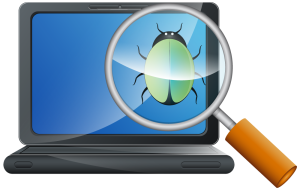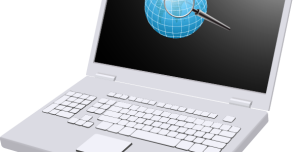Avoiding Cybercrime Dangers: Avoid infections with antivirus and/or anti-malware software
 [This post is the fourth in a series. The original post can be found here.]
[This post is the fourth in a series. The original post can be found here.]
Good behavior alone will not protect you from viruses or other malware infections. You must run software that will prevent and/or detect infections on your computers, and you may want to consider it for your tablets and smartphones too.
But what is the difference between antivirus and anti-malware software? As explained in the “Common types of malware” sidebar on page 9, viruses are a specific type of malware. Malware is a broad term used to describe many different types of malicious code, including viruses, but also Trojans, worms, spyware, and other threats.
Does this mean antivirus software will only protect you from viruses and anti-malware software will protect you from all kinds of malware, including viruses? The answer is, unfortunately, it depends. While most of the more popular tools will scan for many types of malware, you need to look at the specific functionality of each product to know for sure what it will protect you from. From this point forward this article will refer to the broader category of anti-malware software.
The options
Windows computers are prone to infections so you must run anti-malware software on them. Microsoft Security Essentials is a free product you can download to help protect computers running Windows XP, Windows Vista, and Windows 7. Windows 8 includes Windows Defender, also free. Both offer good real-time anti-malware protection.
There are a number of widely used commercial anti-malware programs, some that come in suites that include other functionality like anti-spam, firewalls, remote access, device location and scrubbing.
The two most widely used antivirus programs are Norton™ AntiVirus (symantec.com) and VirusScan (mcafee.com). Expect to pay $40-$60 per computer to buy the software, plus an additional annual fee for virus signature file updates (see opposite). Buying antivirus software that is bundled with other products, such as firewall and anti-spam software, will save you money.
Until recently, it was generally felt it was not necessary to run antimalware software on Apple computers as the Mac OS architecture prevented infections and there were no real malware threats targeting Macs. There are now potential malware threats, and consider ClamXav, an effective and free antivirus program for Mac OS X computers. Note: If you run a Windows emulator on a Mac computer you open yourself to the full gamut of Windows malware risks and you must use a Windows anti-malware tool.
Tablets and smartphones are, in general, much less likely to get malware infections, but you may want to run anti-malware apps on them for greater protection.
As no one tool will catch everything, you may want to consider using more than one anti-malware tool. To better protect yourself, install one security tool that scans for as much as possible and that runs all the time in the background with an on-access scanning engine. This will protect you from threats as you surf the web, install applications, open files and complete your other daily activities. Then, install another anti-malware tool that you can occasionally use on demand to make sure nothing got through or was overlooked. Scan your entire hard disk(s) at least weekly, either manually or automatically (automatic is better as you don’t have to remember to do it).
Bitdefender QuickScan is a free online scan that is handy if you need a second opinion on a Windows computer.
But note, it is important to make sure you do not run two antivirus applications simultaneously. Anti-malware programs do not usually play well together, and running two at the same time can often lead to one identifying the other as a virus, or in some cases, file corruption. Running two at the same time will likely also slow your computer down.
Malware can be extremely difficult to remove from a computer, so it is best to prevent infections. However, if you do get an infection, Malwarebytes Anti-Malware is a good free tool for removing malware from a Windows computer.
Installing anti-malware software updates is a must
Installing anti-malware software is only the start. You also need to regularly update your virus definition or signature files. Anti-malware programs use the information in these files to recognize virus infections when they are occurring. As there are new viruses being created every day, you need to have the most recently released virus signature file to be protected against all known infections. These updates are available on your anti-malware vendor’s website. Expect to pay about $30-$40 per year for these updates.
Most anti-malware programs can be configured to download these updates automatically, without user intervention. Make sure the automatic update feature is enabled as this helps ensure that your protection is always up-to-date.
Staff can help you spot malware infections
Sometimes anti-malware software will not detect that an infection has occurred. While malware can be on a computer and never give any hint of its presence, in many cases there are clues that a computer is infected with malware. See the “How to recognize your computer is infected with malware” sidebar for a list of these symptoms.
Teaching your staff to recognize these symptoms could aid in the earlier detection of an infection.
Dan Pinnington is the Vice President of Claims Prevention at practicePRO. This article first appeared in the December 2013 issue of LawPro magazine. Reprinted with permission. For more cyber safety tips, visit www.lawpro.ca.



